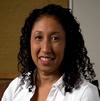9.05 - 10.00
Keynote — Evolving EA from IT to Business
Dr. Jeanne Ross, Director and Principal Research Scientist, MIT Center for Information Systems Research
 Jeanne W. Ross is Director and Principal Research Scientist at the MIT Sloan School’s Center for Information Systems Research. As Director, Jeanne directs academic research that targets the challenges of senior level executives at the Center’s seventy global sponsors. Her own research examines the organizational and performance implications of enterprise architecture initiatives, IT governance, and new IT management practices. Her work has appeared in major practitioner and academic journals, including Sloan Management Review, Harvard Business Review, the Wall Street Journal, MISQ Executive, MIS Quarterly, the Journal of Management Information Systems, IBM Systems Journal, and CIO Magazine. Jeanne W. Ross is Director and Principal Research Scientist at the MIT Sloan School’s Center for Information Systems Research. As Director, Jeanne directs academic research that targets the challenges of senior level executives at the Center’s seventy global sponsors. Her own research examines the organizational and performance implications of enterprise architecture initiatives, IT governance, and new IT management practices. Her work has appeared in major practitioner and academic journals, including Sloan Management Review, Harvard Business Review, the Wall Street Journal, MISQ Executive, MIS Quarterly, the Journal of Management Information Systems, IBM Systems Journal, and CIO Magazine.
Jeanne is coauthor of three books: IT Governance: How Top Performers Manage IT Decision Rights for Superior Results, Enterprise Architecture as Strategy: Creating a Foundation for Business Execution through Harvard Business School Press, and IT Savvy: What Top Executives Must Know to Go from Pain to Gain. She has served on the faculty of customized courses for a number of major corporations, including PepsiCo, McKinsey, General Electric, TRW, Pfizer, News Corporation, Commonwealth Bank of Australia, IBM, and Credit Suisse. She regularly appears as a speaker at major conferences for IT executives. Jeanne earned a B.A. at the University of Illinois, an MBA from The Wharton School at the University of Pennsylvania, and a Ph.D. in Management Information Systems from the University of Wisconsin-Milwaukee. She is a founding senior editor and former editor in chief of MIS Quarterly Executive.
Evolving EA from IT to Business
Enterprise architecture has roots in technology, solutions, and data architecture. This background has sometimes made EA a technical exercise. But in an increasingly digitized economy, enterprise architecture defines how a firm will do business. Thus enterprise architects must bring business insights to their tasks. How do individuals, often steeped in a firm's technology function, provide the business savvy and strategic thinking required to guide enterprise architecture? How do they provide not only technology but business leadership? This talk will describe architecture efforts at firms like UPS, 7-Eleven Japan, Swiss Re, PepsiAmericas, and Campbell Soup. We will discuss how enterprise architects work with CIOs and business leaders to design effective operating models and architect successful businesses.
|
10.05 - 10.45
Building Sustainable Architectures for Business Success
Research shows that a key differentiator for top performing companies is their ability to exploit technology to maximum business advantage. Simply adopting new technologies is not enough. What makes top performing organizations stand out is their ability to take a holistic view of their business strategy, processes and IT architecture – implementing an IT strategy and discipline that continuously focuses on timely, value-driven business results. This session will discuss the concepts of enterprise architecture that will help you transform IT into an engine that can accelerate business change, reduce cost and complexity, and help companies ‘pull away from the pack’. This session will include practical strategies, real-world examples and best practices to build an adaptable and sustainable architecture for today’s constant change
Hamidou Dia, Oracle
 Hamidou Dia is the head of the Oracle Enterprise Architecture Practice in North Hamidou Dia is the head of the Oracle Enterprise Architecture Practice in North  America. His team of experienced enterprise architects and strategists workswith organizations across North America to align IT and business strategies, consolidate IT systems to reduce costs, and define strategic road maps for future growth. America. His team of experienced enterprise architects and strategists workswith organizations across North America to align IT and business strategies, consolidate IT systems to reduce costs, and define strategic road maps for future growth.
Mr. Dia has more than 20 years' experience speaking to executive-level audiences about industry trends, Oracle’s technology strategy, and the value of Oracle’s technology platform and solutions. He is TOGAF-certified and a certified Oracle Enterprise Architect. Mr. Dia has worked closely with many major organizations on enterprise architecture strategy and the deployment of large-scale technology projects using Oracle enterprise solutions.
|
11.20 - 11.55
TOGAF™9 and the US Department of Defense Architecture Framework 2.0 (DoDAF 2.0)
Numerous architecture framework standards have been developed and matured over the past decade and the focus of these frameworks is diverse. Many engineers believe there is an "either or" decision to be made regarding these frameworks; however this is not always the case. Some of these standards address completely different elements of the architecture development process, thus there may be a natural synergy that can be identified and leveraged between architecture frameworks. The central part of TOGAF™ is the Architecture Development Method (ADM), a prescriptive, step-by-step instruction guide for "how to" architect, while the US Department of Defense Architecture Framework (DoDAF) has a primary focus on architecture description via a set of viewpoints. A MITRE working group was formed to analyze and document the relationships between these two frameworks and identify complementary areas. This core group of representatives from MITRE was also supported by members of The Open Group Architecture Forum during this effort. The baseline versions of the documents used were TOGAF 9 and DoDAF 2.0.
Previous analysis between TOGAF 8.1 and DoDAF 1.0 concluded that TOGAF and DoDAF were synergistic and complementary frameworks. This also holds true for the TOGAF 9 and DoDAF 2.0 releases. TOGAF continues to add depth to its method, while DoDAF has added depth and integrity to the types of data and viewpoints used to describe architectures. With all the improvements, it still remains beneficial to any DoDAF architect development effort to use the TOGAF Architecture Development Method (ADM). Developing DoDAF models in conjunction with ADM allows an architect to produce an architecture description within a well-defined and repeatable process.
Mary Tolbert, Lead Enterprise Architect, US Air Force Combat Information Transport System
 Mary Tolbert joined The MITRE Corporation in 2003 after serving 10 years in the U.S. Air Force as a Communication and Information Officer. In her final Air Force position, she served as the Software Factory's Chief Architect for Headquarters Standard Systems Group at Maxwell-Gunter Annex, AL. Mary Tolbert joined The MITRE Corporation in 2003 after serving 10 years in the U.S. Air Force as a Communication and Information Officer. In her final Air Force position, she served as the Software Factory's Chief Architect for Headquarters Standard Systems Group at Maxwell-Gunter Annex, AL.
Mary is currently Lead Enterprise Architect for the US Air Force Combat Information Transport System, a multi-billion dollar Air Force acquisition program which provides fixed-base information infrastructure and network management/network defense capabilities.
Mary earned a BA in International Relations from University of California at Davis (1993) and a MS in Information Resources Management from the Air Force Institute of Technology as a distinguished graduate (1999). She received a Federal Enterprise Architecture Certification from the FEAC Institute in Washington, DC and a Certified Enterprise Architect designation from Carnegie Mellon Institute for Software Research International. She is also TOGAF 8 and ITIL Foundations certified.
|